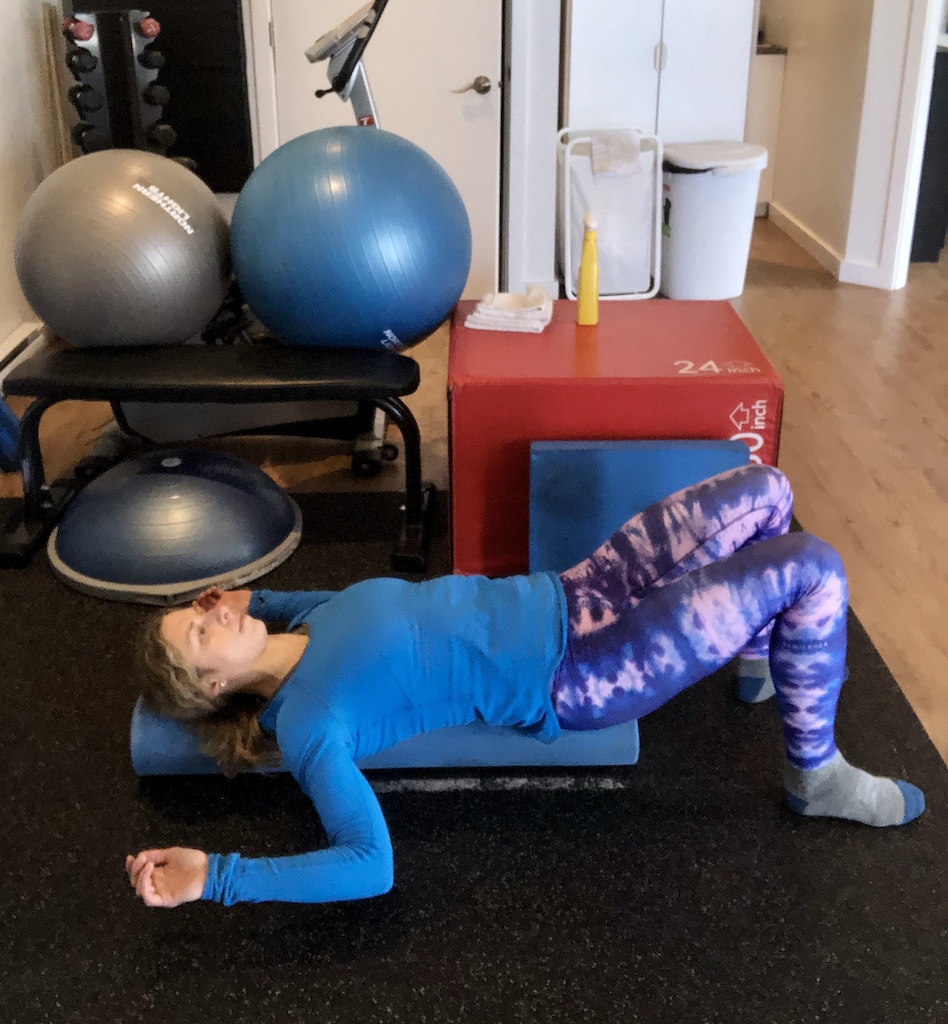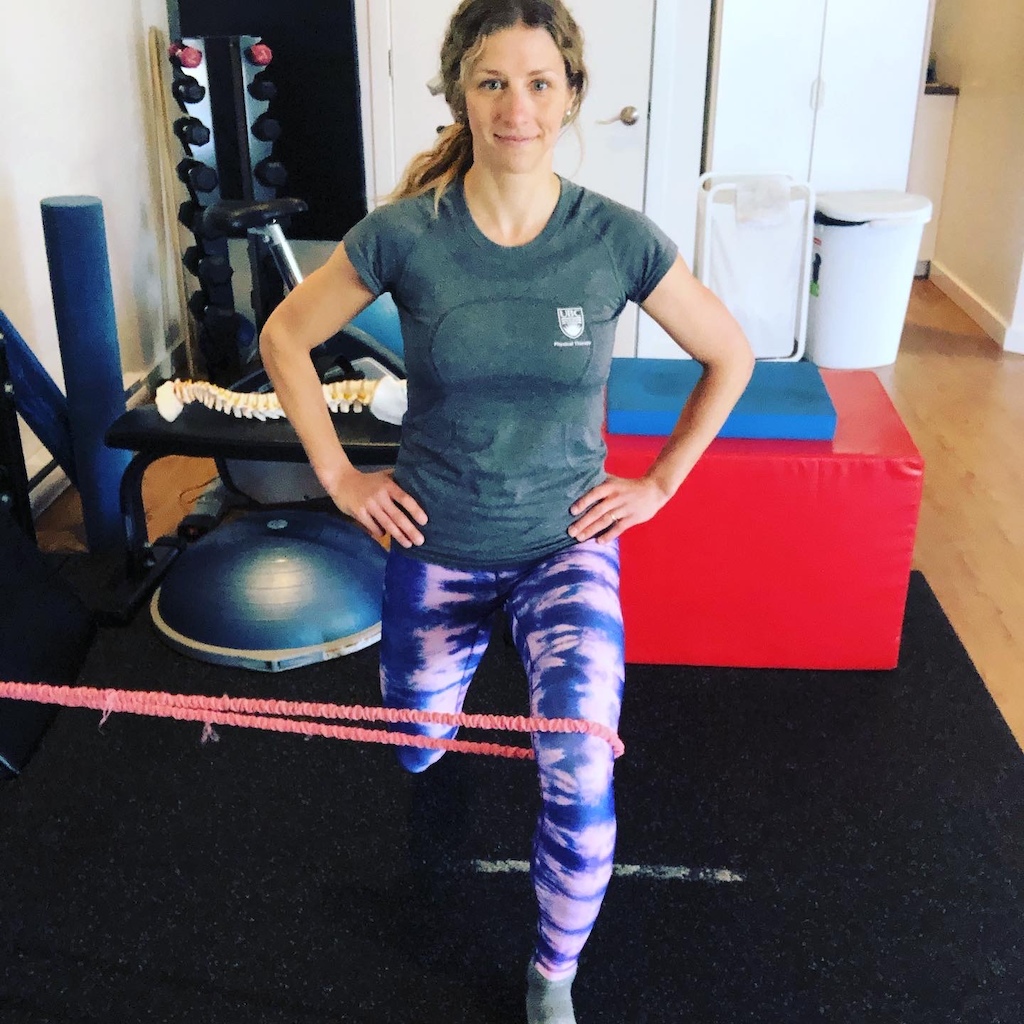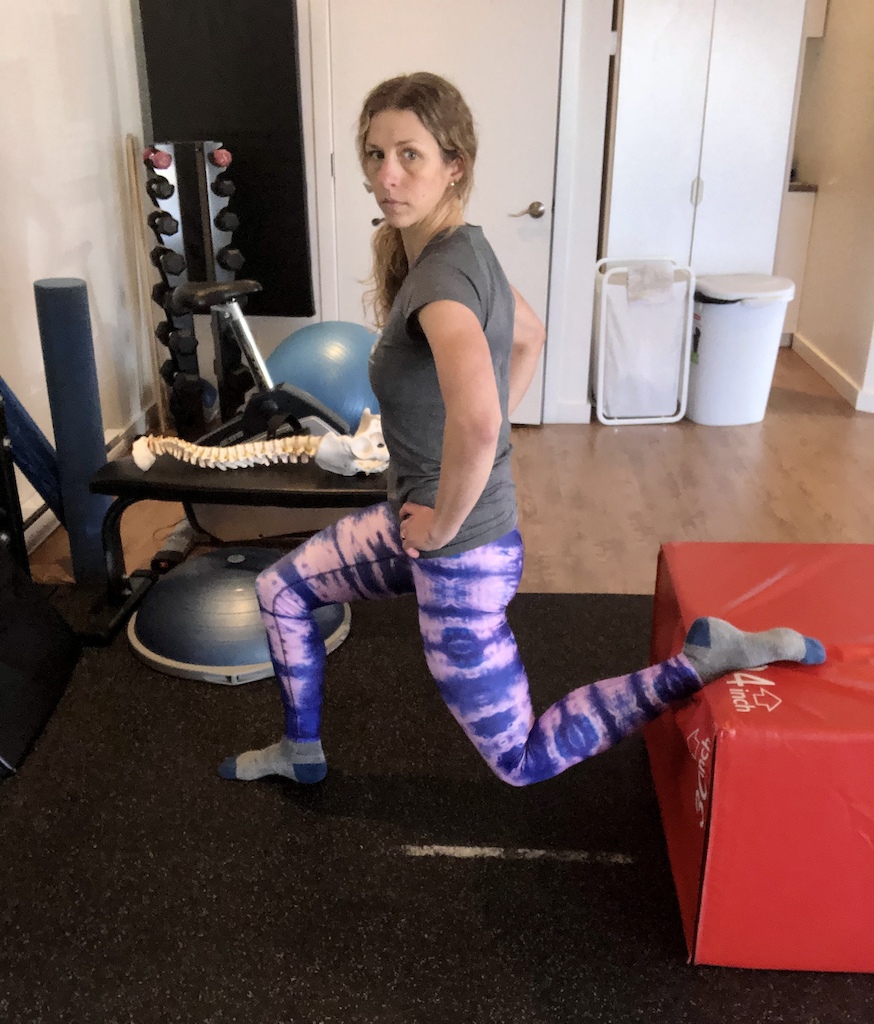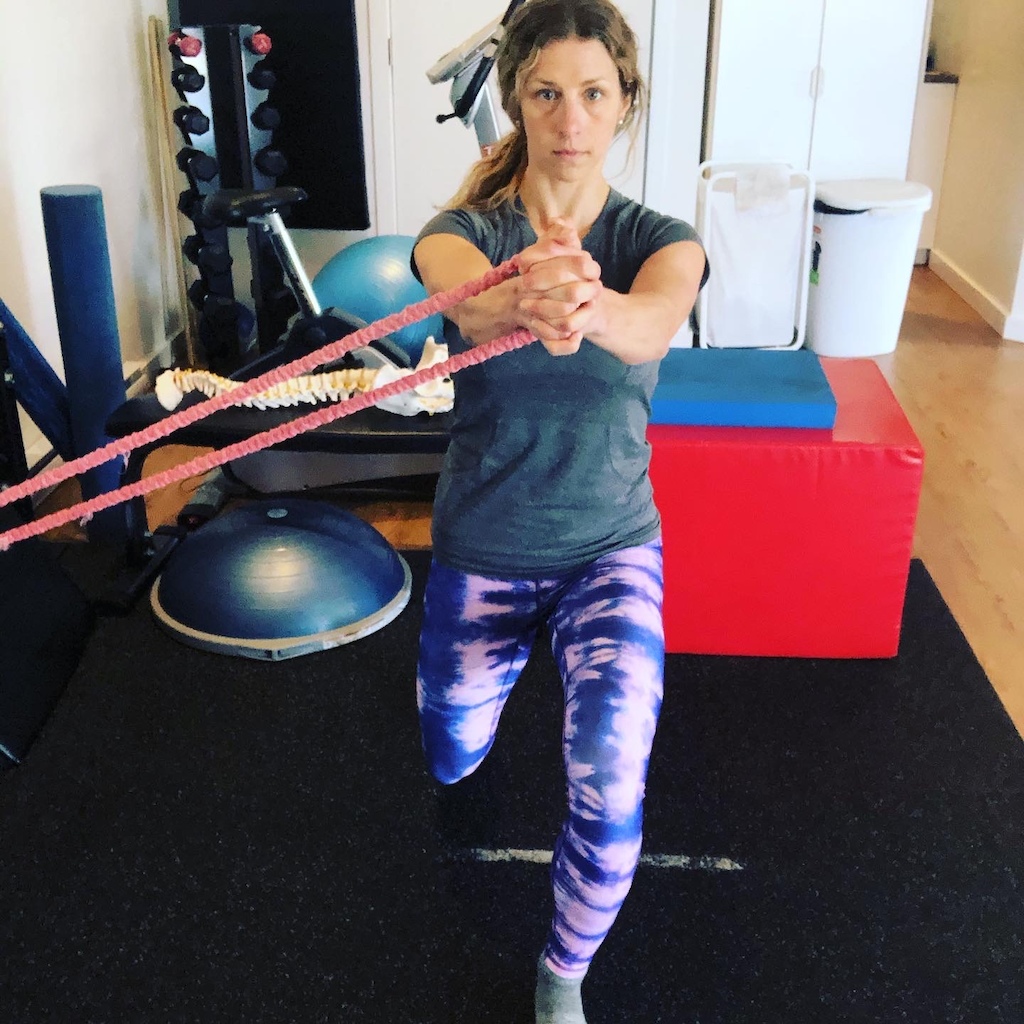Stories posted under Pinkbike Community blogs are not edited, vetted, or approved by the Pinkbike editorial team. These are stories from Pinkbike users.
If a blog post is offensive or violates the Terms of Services, please report the blog to Community moderators.
Essential Off-bike Exercise Toolbox
If you read my last post, you now know about all the problems that can arise when you spend a lot of time riding, and not enough time performing off-bike exercises, essential to injury prevention. For those of you that are doubtfully thinking, “Right, exercise is going to prevent me from casing a jump and breaking my collarbone....” You’re right, while we can prevent the chronic injuries with exercise, we can’t necessarily prevent the traumatic ones. However, we can reduce the severity of your injuries. For example, strength training increases bone strength, therefore decreasing the likelihood of a fracture. Stability training, improves your muscles’ ability to protect your joints and ligaments during a crash, reducing your likelihood of sustaining a ligamentous injury (AC joint). Regardless of your injury severity, off-bike conditioning can shorten your healing timeline and get you back on your bike quicker.
So, as promised, here are some basic essentials that I recommend you integrate into your weekly rituals to help keep you out of the clinic and on your bike. I will be the first to admit that this stuff will not hold your attention like Tiger King. So, turn on that nonsense and kill two birds with one stone! Also, please bear in mind when watching these exercise videos that my skills as a Physiotherapist, rider and snack queen far outweigh my skills behind a camera!
Disclaimer: The information provided in this article is based on my own clinical observation, and knowledge gained from evidence-based practice. That said, it is my personal belief that purple tights alleviate boredom and facilitate gains.
Disclaimer: The information provided in this article is based on my own clinical observation, and knowledge gained from evidence-based practice. That said, it is my personal belief that purple tights alleviate boredom and facilitate gains.
Stretches
Ideally these are performed post vs. pre ride.
Side lying quad stretch: Aims to stretch your quads and your hip flexors unlike your typical standing quad stretch. Hold 1-2 minutes.
Foam rolling ITBand: Aims to restore the slide and glide between your muscle and the saran-wrap like tissue surrounding it. Aim for 2-3 minutes.
Pec Stretch: Lie with spine length-wise on a long foam roll or rolled yoga mat. Relax arms out to side as shown trying to keep mid back flat. 2-3 minutes
Thoracic Mobility: Lie on roll at shoulder blade level, butt resting on ground. Interlace fingers to cradle head in hands. On your exhale, relax back over roll expanding through heart and chest, while keeping lower ribs from flaring outwards. Breathe here 5-10 breaths if comfortable, or roll back up like a partial sit-up and perform this motion repeatedly for a more dynamic stretch.
Foam rolling ITBand: Aims to restore the slide and glide between your muscle and the saran-wrap like tissue surrounding it. Aim for 2-3 minutes.
Pec Stretch: Lie with spine length-wise on a long foam roll or rolled yoga mat. Relax arms out to side as shown trying to keep mid back flat. 2-3 minutes
Thoracic Mobility: Lie on roll at shoulder blade level, butt resting on ground. Interlace fingers to cradle head in hands. On your exhale, relax back over roll expanding through heart and chest, while keeping lower ribs from flaring outwards. Breathe here 5-10 breaths if comfortable, or roll back up like a partial sit-up and perform this motion repeatedly for a more dynamic stretch.
Core and Shoulder Stability
Neutral spine what now ???? Not all core exercises aim to maintain a neutral spine, of course, however, your ABILITY to do so is critical not only in the prevention of chronic pain/injuries, but also to improve dynamic control descending, improve general bike handling skills, and to increase power output and decrease energy expenditure while pedalling.
I recommend incorporating a core routine into your life, 2-4 days/week.
Toe taps: This exercise is a great place to start a core routine, as it aims to wake up and retrain your deep core muscles to stabilize your spine and pelvis. Their competence can, in turn, inhibit overworking back extensors, hip flexors, and muscles of your neck that may be helping absorb impact and stabilize unnecessarily. I recommend doing 2-3 sets of the maximum number of reps you can do correctly.
Bird dog: Another great option to challenge your ability to maintain a neutral spine while also challenging shoulder stability in a weight bearing (mountain bike-specific) position. Attaching a medium resistance band to your moving hand and foot (opposites), as shown, can be a nice addition to fire up the under-active muscles of your moving shoulder, and gluts of your moving leg. I recommend 2-3 sets of 10-12/side.
Knee hover: Start on all 4's, similar to your bird dog above. Find your neutral spine, engage your deep core muscles, then slowly hover BOTH knees 1 cm off the ground. Hold 5-10 breaths - Repeat 5-10 times.
Progression 1: From your knee hover position, try to extend one leg behind you without losing your neutral spine.
Progression 2: From your knee hover position, reaching one arm forward and extending your opposite leg behind you, without losing your neutral spine.
Do 2-3 sets of 6-12 reps/side (# of reps you are able to do with correct form)
Progression 2: From your knee hover position, reaching one arm forward and extending your opposite leg behind you, without losing your neutral spine.
Do 2-3 sets of 6-12 reps/side (# of reps you are able to do with correct form)
Y-Reach for shoulder (scapular) stability: I liked to combine this exercise with split squats (see below), to spend less time in the gym, while ticking off all the boxes
Plank/Downward dog: Another great exercise to target core and shoulder stability, as well as providing a dynamic hamstring stretch. Note, this exercise requires adequate thoracic/upper back and shoulder mobility. If you have any current shoulder pain, a history of shoulder impingement or rotator cuff injury/surgery, consult with your Physiotherapist before giving this one a try! Aim for the same reps/sets as my other core suggestions.
Functional Lower Body Strength and Stability
Split Squats: Split squats are basically your single leg squat. Here is a list of reasons why these are my personal favorite cross training and rehabilitation tool for cyclists:
1. They provide a dynamic hip flexor/quadricep stretch for the hind leg
2. They challenge your core and pelvic stability in a way that translates to better power output and glut recruitment on the bike.
3. They can be an effective tool to correct dynamic hip, knee and ankle alignment, or tracking errors that can contribute to chronic pain on and off the bike including, patellafemoral pain, lliotibial band syndrome and achilles tendinopathy. See progressions below for band integrations.
Note: You're objective is to maintain a level pelvis and neutral spine throughout this exercise. With that, make sure you are able to do the basic version well for 2-3 sets of 15-20 reps targeting endurance, before progressing to the band options, adding weight and or speed variations (see below). Depending on the time of year, and how much riding you are doing, I recommend incorporating these intro your weekly routine 2-3 days/week. If you are incorporating the strength or speed/agility variations, make sure they are done on separate days.
Modifications and Stability Progressions
Modification for knee pain: Replace standard split squats with bulgarian split squats if you experience knee pain of the leg that is behind.
Stability Progression 1: Band resisting inward collapse of the knee.
Stability Progression 2: Band resisting shoulder stability and torso rotation, and secondary inward collapse of the knee.
Stability Progression 1: Band resisting inward collapse of the knee.
Stability Progression 2: Band resisting shoulder stability and torso rotation, and secondary inward collapse of the knee.
Strength Progressions: Once you've mastered the standard split squat, add weight, increase your sets and decrease your reps. For example 4-6 sets of 6-8.
Speed and Agility Progressions: The possibilities are endless here. A few ideas include simple increasing the speed of your standard split squat, jump to switch legs, try doing them with your front foot on an uneven surface like a bosu or foam pad. Aim for similar reps/sets as your standard split squats.
Please note that while this post has touched on shoulder and postural stability to prevent chronic pain while riding, it does not include recommendations for upper body strength training. As mentioned earlier, I recommend whole body strength training both to decrease the severity of crash related injuries, but also to speed your recovery following the worst case scenarios.
That pretty much sums up your Prehabilitation, and also, Quarantine Toolbox, all of which can be done from home with minimal equipment and minimal time, allowing you to spend more time on the trails! Please contact me or your local Physio if you're looking for additional guidance on personalizing your cross-training plan or, if you are experiencing pain or limitations with any of the above suggestions.
View my instagram account for more nerdy tips, but mostly just bike-related posts!
Happy Riding !
Author Info:
Must Read This Week
Sign Up for the Pinkbike Newsletter - All the Biggest, Most Interesting Stories in your Inbox
PB Newsletter Signup
0 Comments
Login or Sign Up













 Member since Sep 16, 2013
Member since Sep 16, 2013